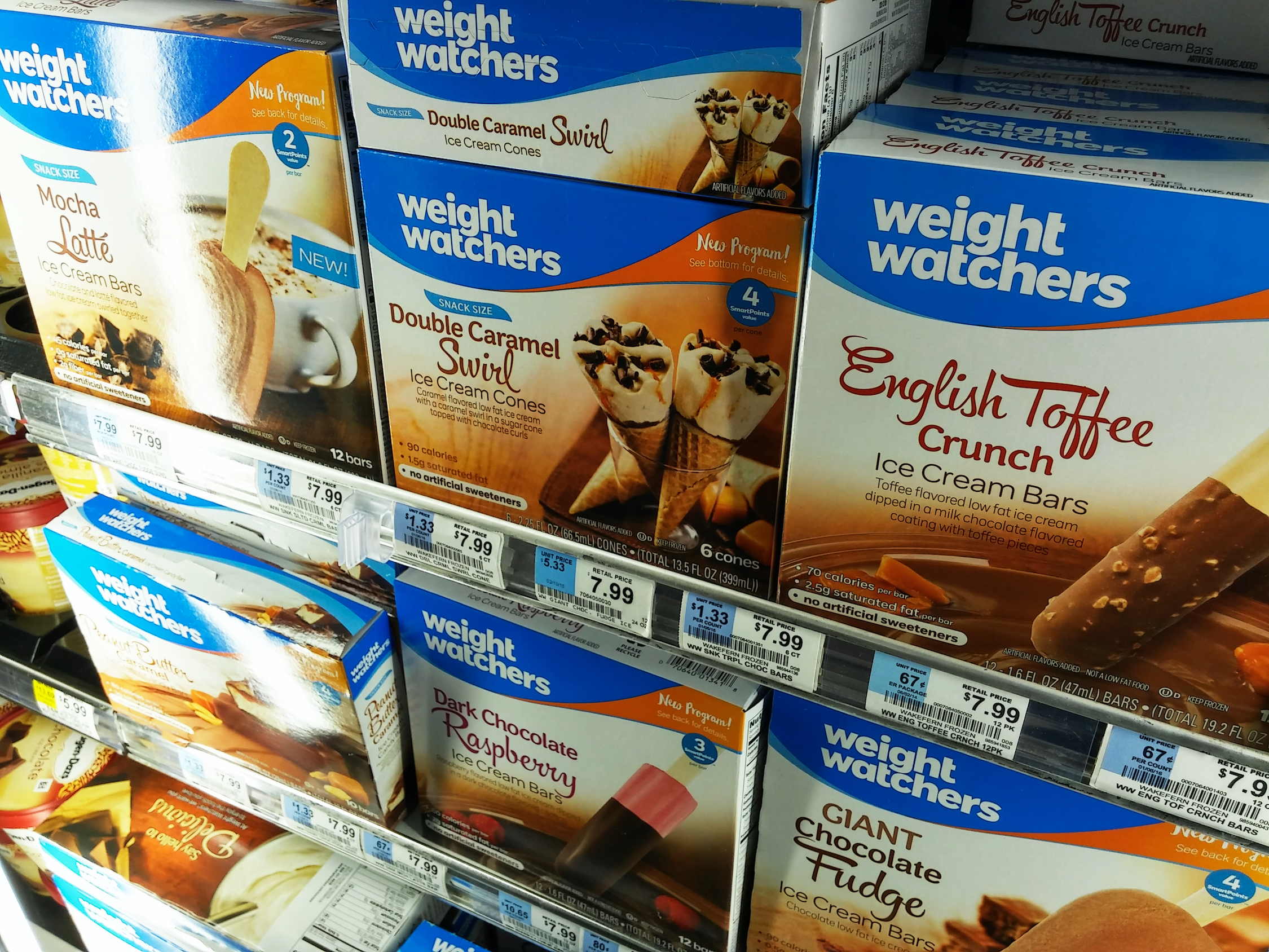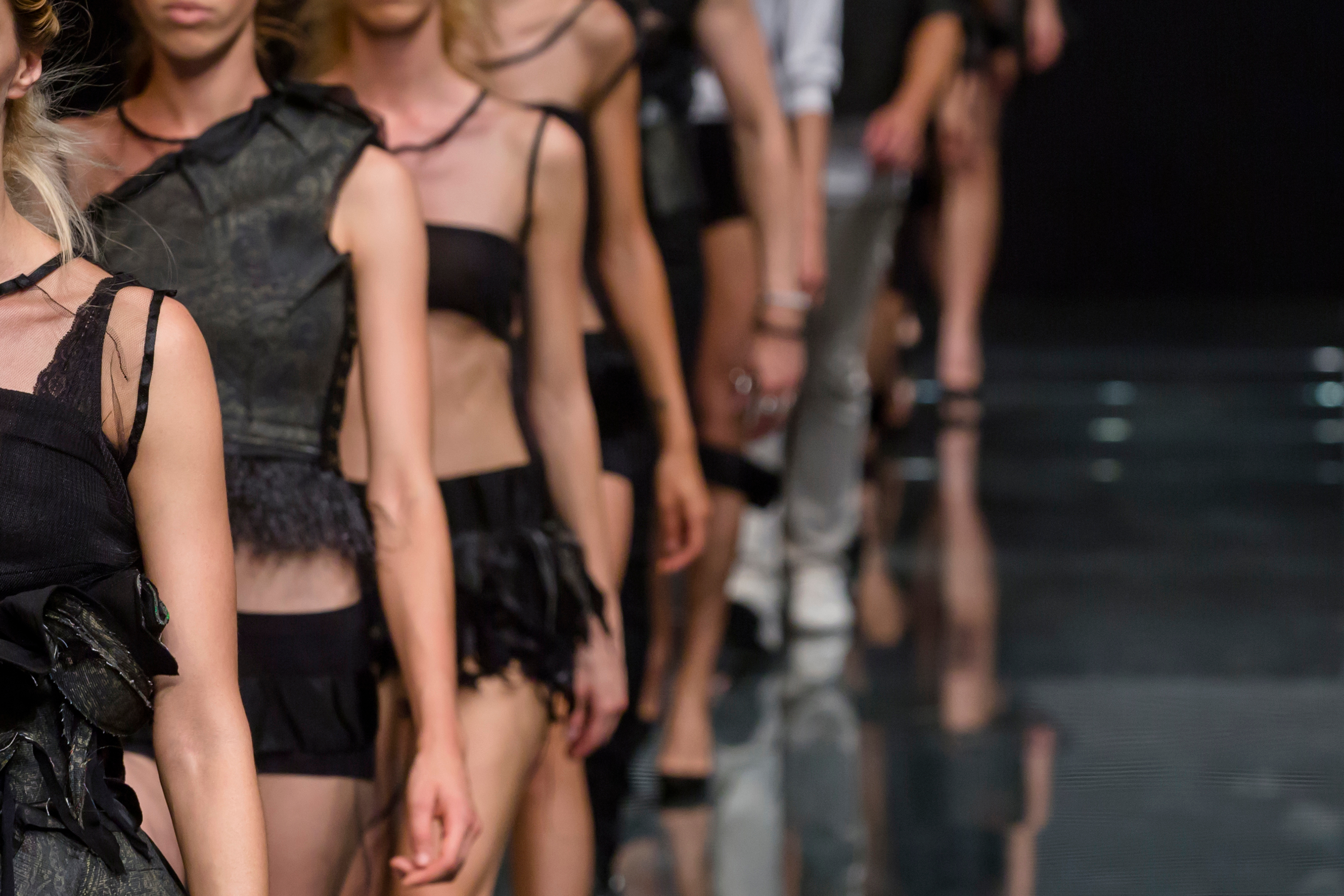Today, beauty labour is accepted as part of what we need to be engaged with. When you take a selfie, whether you’re in England or China, you can have an app that will give you seven different degrees of beauty to enhance yourself by. The commercialisation of the body hides the amount of work that we put into producing our bodies. Ingeniously, this beauty labour is presented to us as pampering, as self-care, as pleasure. We find ourselves enjoying the act of producing a self that is OK in the world.
We often think of the industries that are involved in the production of beauty labour, health and fitness and the fashion industry as being small industries. When it comes to fashion, the richest people in Europe are producers of fashion and cosmetics.
The diet wellness industry is an absolutely enormous industry that does very well because it’s based on a 95% failure rate, a recidivism rate. Every time you go on a diet, or a wellness regime, you’re mucking around with the most basic of mechanisms that tell you when to eat and when to stop, and if you do that repeatedly, you will mess up that mechanism; but, more importantly, after you come off a diet, you will feel success for a very short time, and a few months later, you will feel you need to go on another one. Companies like Weight Watchers rely on repeat customers. They don’t want customers who are successful. In fact, under questioning at the British Parliament, Weight Watchers could only show results of a weight loss of about five kilogrammes, which is absolutely nothing when you think about the amount of budgets going from our health systems into their coffers.
The impact on young girls
We don’t think of the large amount of money that is riding on the back of inviting people to feel inadequate in relation to their body so that the spend on beauty can go up. Department stores are increasingly taken up with cosmetics and the fashion industry. These two commodities press on our bodies in ways that are extremely disturbing. Little girls of five and six are already having parties for manicures and pedicures and hairdressing. Girls from privileged backgrounds consider it a party treat to be invoked into what constitutes femininity today, which is to be working on your body. This wouldn’t be so frightening if it didn’t have a huge impact on girls. We know that if you talk to girls about their bodies right before a science or maths exam, they score lower. Their anxieties about their bodies are stoked by commercial exploitation, which creates the sense that the body they live in is not OK.
Black culture in North America has hugely influenced what constitutes a cool body, and all cultures are being appropriated by the beauty and fashion industries to exoticise materials and looks that come from other countries. There’s a battleground going on right now. I don’t know where it will end up, but I’m not sure it will end up in variety. We have so much variety in the human experience, not just in about how we look, but in how we express it. The question is how long that variety can live, as the multiplicity of images gets blended into the narrowing of images at the same time. There’s a real tension going on between those two events. Nowadays, in make-up, you can have every single shade of foundation – for women and men. On the one hand, that’s progress; on the other hand, there is still the idea of presentation as being completely critical. So, there’s the commercialisation of the body at the same time as there’s a kind of essence variety being offered.
The effect of pornography
It’s particularly disturbing, as pre-adolescent and adolescent boys are becoming interested in sexuality, to see that they are turned on to visual expressions of something that they think is sex, but has to do with performance on their part. It has to do with girls flirting with them and their penis being the most sensual aspect of the sexual encounter, alongside the hardness of the penis and the length of the penis, which, of course, invites them to feel terrible and to seek solutions for having a bigger penis. It’s a brutality that is invoked in boys and young men about what sex is.
I don’t think that what sex is for girls and women is less brutal, it’s just very different. I think there’s a terrible mismatch between what porn is and what sex is. What worries me is seeing very young girls not just playing to the camera, but playing cutesy, seductive, as though their role is to seduce, as though that is their form of power and that a way to have a body is to seduce and beautify, and that is how you can feel secure if you are then met by a boy.
What I see from social media that disturbs me a lot is how much the body is a part-object. It isn’t a body as a whole thing. It’s a breast. It’s a penis. It’s a bottom. The whole body becomes fetishised at the level of general self-representation on social media. There’s a lot of evidence to show how much time, not just influencers, but ordinary girls, spend putting up pictures of themselves on social media, how many filters they use, how many likes they want, and the distress that they have when they don’t get the response that they want. From my perspective, the reason they need that response of a lot of likes is because they don’t feel their body is stable. It’s an expression of body troubles. If they felt their bodies were OK, they wouldn’t need the likes reflected all the time: they could be living with and from their bodies.
We’ve brought up a generation that requires confirmation of all their acts and all their physical being through the camera and through the sharing and the acknowledgement that what they’re sharing is acceptable. In all the work that I’ve seen, nobody gets enough likes. That’s the upset – that the likes that are craved are so much higher than the likes that are given – and we know now the dopamine hit from a like means that you increasingly want more.
Resisting the exploitation of our bodies
If we work in the area of health service or pregnancy, we can do two for the price of one. We can help new mums, or expectant mums, feel more comfortable about the process of pregnancy; that it’s not about getting back in your jeans in post-pregnancy. If you’re in political agitation around the diet industry, you could take them to court, prosecute them for false advertising because they are against the Trade Descriptions Act. If you’re a teacher, you could ignore the government directives on focusing on obesity and try to help young people to feel that their body appetites are things to respond to and not to be distorted. If we were working with parents as a group, we could ask them to stop talking about food all the time at the table, to talk about other things, because the obsession with food is inadvertently creating food concerns for the next generation. If we were doctors, we might actually look at what goes on with the whole human body and not focus on categories.
The main thing is to join groups – this is where social media can come in to help – in which more complex ideas about the struggle to feel legitimate in your body and to legitimate other bodies, bodies that are different from yours and bodies that can dare to be enjoyed. I’m asking people to get together, to risk having a body and to create a culture that can reshape how we understand bodies in the world.
Discover more about
The making of the body and body image
Orbach, S. (2018, June 24). Forty years since Fat Is A Feminist Issue. The Guardian.
Orbach, S. (2018). Foreword: The Making of the Body. In A. S. Elias, R. Gill, & C. Scharff. (Eds.), Aesthetic Labour: Rethinking Beauty Politics in Neoliberalism (pp. vii–x). Palgrave Macmillan.
Orbach, S., & Rubin, H. (2014). Two for the price of one: the impact of body image during pregnancy and after birth. Government Equalities Office.
Halliwell, E., Diedrichs, P. C., & Orbach, S. (2014). Costing the invisible: A review of the evidence examining the links between body image, aspirations, education and workplace confidence. (Prepared for: Government Equalities Office). University of the West of England.


